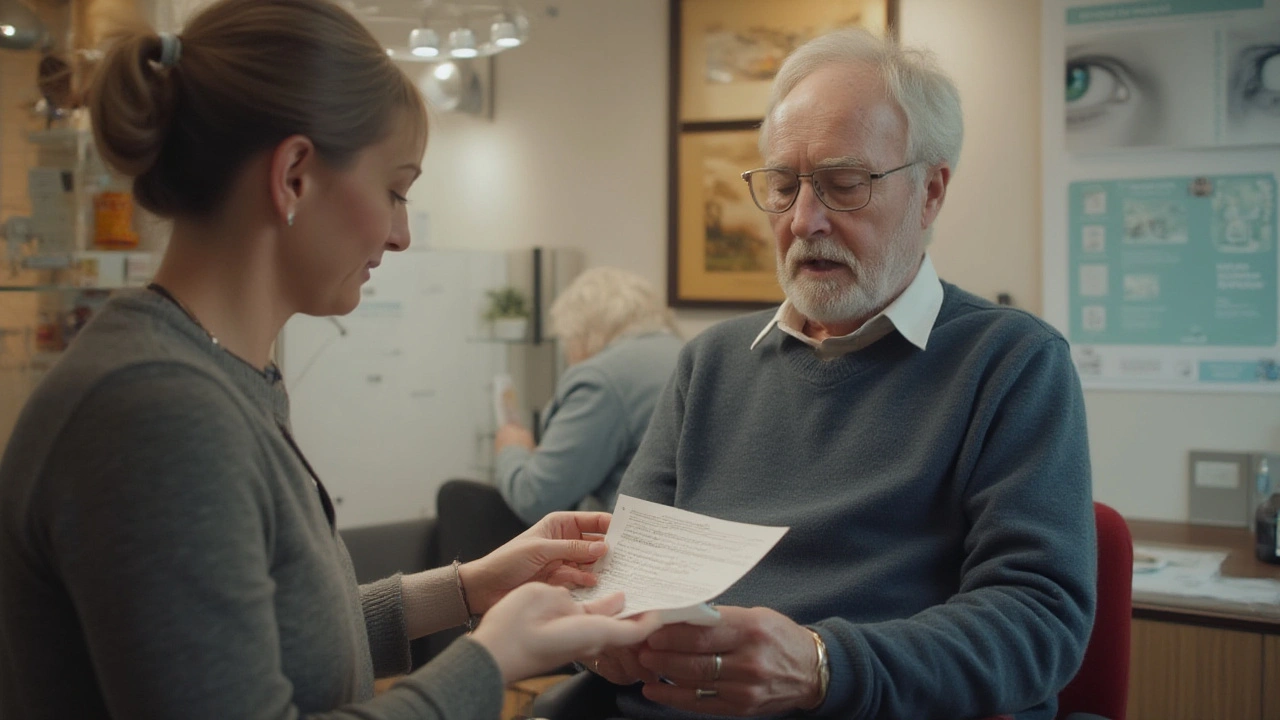Eye Drops Safety: Smart Tips for Protecting Your Eyes
Most of us reach for eye drops when our eyes sting, itch, or just won’t stop feeling dry. But using eye drops the wrong way is more common than you’d think—and it’s riskier than it sounds. Forget the idea that “all drops are safe.” Even over-the-counter ones can cause infections, burning, or make problems worse if you’re careless. So what’s the right way to use them?
For starters, ditch the shared bathroom shelf. Eye drops don’t belong in hot, humid places. Heat breaks down the stuff in the bottle and lets germs sneak in. Keep your drops in a cool, dry spot—only put them in the fridge if the label says it’s okay. If the liquid looks cloudy or changes color, toss it. That’s bacteria moving in. Using spoiled drops in your eyes is a bad idea you’ll regret fast.
Before you even touch the bottle, wash your hands. And not a quick rinse—use soap and get between your fingers. A single touch from grubby hands can transfer bacteria right into your eye. Then, be careful not to let the dropper tip touch your eye, lashes, or even your fingers. If it happens, bacteria hop onto the nozzle and can get into the bottle. That’s how people end up with angry, red eyes—or worse.
Wondering how to actually put in eye drops without missing? Tilt your head back, look up, and gently pull your lower eyelid down. Create a small pocket and squeeze in one drop. Blink gently; don’t squeeze your eye shut or rub. If you’re using more than one type of drop, wait 5-10 minutes before the next one. This helps your eye absorb the medicine instead of washing it straight out. Rushing is just wasting good medicine and money.
After opening, most eye drop bottles are good for about 30 days—after that, there’s a higher chance they’ll grow bugs you don’t want. If it’s a single-use vial, throw it away after the first use, even if there’s liquid left. Saving a few bucks isn’t worth the risk to your vision.
Been prescribed drops for things like glaucoma, infection, or allergies? Always follow your doctor’s instructions. Taking more drops than prescribed won’t speed up healing. In fact, it can make things worse. Itchy eyes sometimes tempt people to use drops more often, but that can cause rebound redness or more irritation. If the drops sting, burn, or if your vision gets blurry, don’t wing it—get medical help. Some problems can’t wait.
Sometimes, people don’t realize their eye drops might clash with other medications. Some allergy and steroid drops work against certain prescriptions for blood pressure or other conditions. If you get new medication, mention your eye drops to the pharmacist.
Bottom line: eye drops help when used with care, but they’re not risk-free. Store them right, use clean hands, don’t share with anyone, and never reuse old bottles. Your eyes are too important to risk on shortcuts or guesswork.
Ophthalmologist Advice: Safe Dosage and Use of Carbonic Anhydrase Inhibitors
Expert advice on safe use of carbonic anhydrase inhibitors for eye care, including dosing, interactions, follow-up steps, and side effect management tips.
